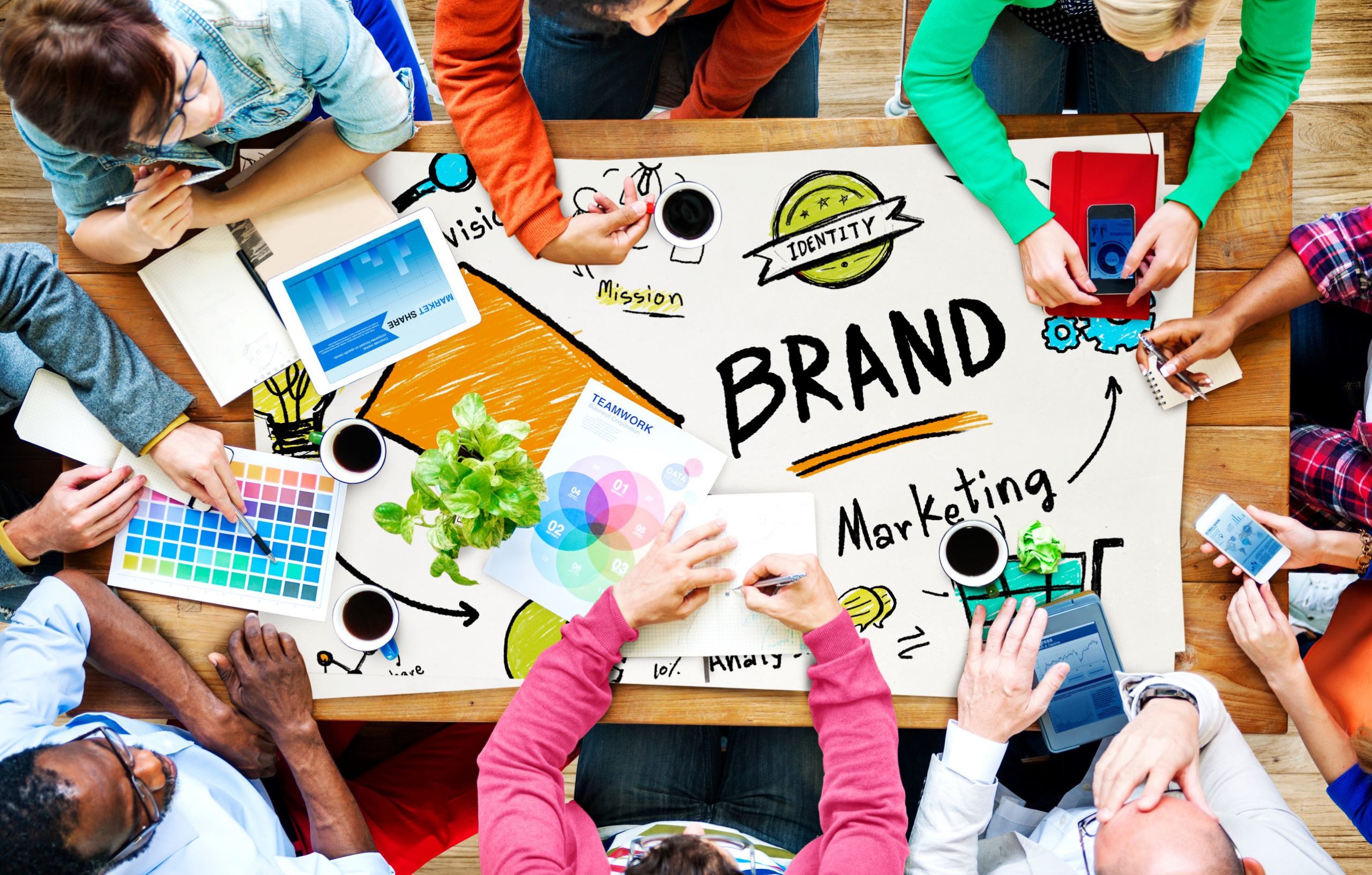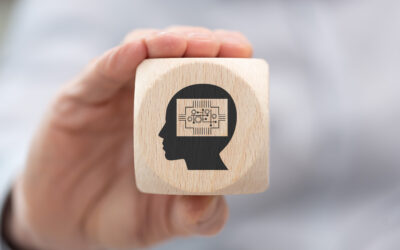“We look at the brand not as a piece of advertising, but everything we do communicates who Starbucks is. The place, the physical environment, really has become an extension of the brand and it’s very important to the success of the company.” – Howard Schultz
Is retail about the products you sell, your service, or the atmosphere in your customers’ shop? In truth, it’s all of the above. But creating a compelling retail environment is more complex than simply putting things on shelves and opening the doors. There are many different aspects to consider, from lighting and color schemes to music and signage. This blog will explore what makes up an engaging retail environment and provide industry examples of the successful application of atmospherics.
What does the retail environment Include?
The retail store environment includes all of the physical, visual, and semantic elements that contribute to attracting customers into the store and connecting with them emotionally. Everything has a purpose, from layout to music, product, displays, scent, and signage, and it all adds to the shopping experience.
Features of the Retail Environments
The retail environment (aka, Atmosphere) is an essential connection to the perception of a retail brand. Here are the features of a store atmosphere that contribute to the customer experience and that we will explore in this blog. They include:
- The store layout, including space usage, check-out counters locations,
- Merchandising mix that supports atmosphere and brand strategy
- Scents or aromas designed to elicit a particular response
- The placement of signage, price information, decorations, and displays, employee uniforms
- Music that both contributes to and enhances the shopping experience
- The temperature and lighting of the retail space
These features influence mood, increase potential retail sales conversion, and improve customer services, experience, and retention.
What Are Atmospherics?
Atmospherics are the controllable characteristics of a retail environment that persuades shoppers to enter the store, feel good and spend money. Philip Kotler first identified design atmospherics as a marketing device in 1973 (Investopedia). In the retail store context, the semantic elements of a retail outlet, such as lighting, ambient sound, merchandise layout, and other store fixtures, can be designed in a way that elicits a particular mood.
How do Atmospherics Impact the Retail Environment?
Most successful retailer use atmospherics to enhance their store environments to look and feel more appealing. This can be done in several different ways, such as giving the store a warm vibe by having comfortable sofas available, a fireplace and jazz music playing in the background so people feel relaxed. In contrast, some stores may use modern art, popular music and bright lights to attract a specific demographic. The setting depends on the style, feel and theme the organization intends to create.
Note: The online shopping environment is impacted less by sensory triggers than the physical store environment. This blog focuses mainly on the brick-and-mortar retail experience.
Store layouts, Space usage, and Visual Merchandising
Retailers use store layouts to influence customers’ behavior, such as traffic flow, merchandise placement, and ambiance. Layouts also make retailers aware of how much revenue per square foot they earn. This information allows for accurate assessments of the strengths and weaknesses in their merchandising mix and atmospheric strategy.
Floor Plan Strategy
The floor plan creates the circulation, which then directly controls the direction of the traffic flow based on the studied psychology of consumer movement patterns within a retail space. Circulation is crucial because it ensures that the consumer moves through the store from front to back, guiding them to essential displays and, in the end, to the cashier.
Once the space planning, such as layout and circulation, has been determined, the atmosphere and semantic enhancements can be added, including lighting, sound, materials, and visual branding. These environmental characteristics will facilitate the desired impact on the consumer.
Case: Walmart Floor Plan, Layout, and Design
Walmart introduced its airport-inspired navigational “wayfinding systems.” This layout design efficiently directs large groups of people quickly through stores in a simple yet organized manner. In addition, Walmart optimized product layout, showcasing key items throughout the store, including dedicated in-store sections for electronics, toys, baby products, etc.
Visual Merchandising and the retail environment
In-store visual merchandising captures the attention of consumers as they traverse the store and are an essential component of the purchase decision-making process. In the retail industry, visual merchandising is critical to presenting products in a way that highlights their features and benefits. Four key elements of visual merchandising involving atmospherics are the as follows:
- Store exterior
- Store layout
- Store interior
- Interior display
Each of these elements influences the overall shopping atmosphere and buying behavior in physical stores.
Case: Walmart 2018-22 Redesign
An effective atmospheric strategy enhances the shopping environment and entices customers to purchase. For example, based on consumer studies and trends (pandemic 2019-2022), Walmart updated its interior and exterior signage to reflect the Walmart “app icon.” The goal of the redesign is to facilitate an instant Omni shopping customer experience. Colorful icon imagery greets customers at the store entrance, and an airport-inspired directory board encourages customers to download and use the Walmart app as they shop.
Merchandising mix and Environment Strategy
The marketing mix is a controllable marketing tool that a company exploits to produce the desired response. It consists of everything that a company can do to promote the sale of its products. Moreover, It is also supports marketing, planning, and execution:
- Product: fulfills demand in the market opportunity and meets customer needs.
- Price: is the cost the customer is willing and able to pay to purchase as reflected in the pricing strategy.
- Place: the placement caters to the target market and is made accessible and visibly appealing to that market.
- Promotion: this includes all the strategies used to communicate the product’s value and attract a customer to purchase it.
Case: Shoppers Drug Mart (Pharmacy) Marketing Mix
An effective atmospheric strategy must utilize the 4 Ps of the marketing mix to meet the objectives of the overall campaign. Each “P” has a tool that is complementary to the environmental aims of the marketing mix:
A study of 5,000 customers conducted by Shoppers Home Health Care found that shoppers:
- Want to deal with aging differently than previous generations
- Do not want to feel old and are looking to control how they age.
- Want their views on aging to be reflected in their shopping experience
As part of their Wellwise pilot project, Shoppers’ Drug Mart pharmacies shifted their approach from illness to wellness at brick-and-mortar pharmacy locations.
For example, shopping aisle light, colors, and decor have made shopping aisles appear brighter, unclutter, and more accessible. In addition, product samples are unpackaged and placed to make them easier to touch and try. Lastly, the product mix focuses on six key categories: wellness, mobility, active living, tools and gadgets, personal care, and home comfort. Each category is complementary to the atmospheric “wellness” strategy.
Scents or Aromas Designed to Elicit a Particular Response
Unique aromas can differentiate the brand experience and shopping environments. For example, when customers smell certain scents outside of the store, they act brand-remind and trigger memories of products. Odors can also impact emotional responses and behaviors.
Case: Cinnabon Scent Marketing
The Cinnabon bakery chain attracts customers with the smell tactics. The cinnamon scent is deliberately planned to convince potential customers to buy cinnamon rolls. Ovens are placed near the front of each store so that the smell “escapes” when employees open the oven doors.
“When you smell it out of the bottle, it smells like cream cheese frosting, which our cinnamon rolls smell like.”
The stores are located in malls and airports on purpose so that the “smells can linger,” cinnamon rolls are baked every 30 minutes at a minimum, and to keep the scent in the air, some stores even warm-up sheets of cinnamon and brown sugar (the Wall Street Journal).
Signage, Price, Decorations, Merchandising Displays, employee uniforms
A retail outlet can change its shopping environment by changing “atmospheric cues,” consisting of thematic and social elements. For instance, using different types of signage, graphics, and merchandising displays to increase the persuasiveness of sales associates, including:
- The use of graphics and visuals in window displays effectively communicates information to potential customers.
- Signage must communicate brief messages, consistent with the brand’s marketing and promotional model.
- Visually, signage should be appealing to consumers and easy to read.
For example, Apple’s open-concept, sleek, and modern store atmosphere clearly communicates an intended image. This can be seen via its in-store product displays, color, furniture selections and decor contributing to the brand’s chic and high-tech image.
Uniforms Enhance Customer Engagement
Uniforms support visual business advertising, brand promotion, and customer engagement. Customers feel more connected to the company when the faces represent it. Additionally, uniforms make it easy for customers to identify who works at the business, their department, and their role. As part of an atmospheric strategy, uniform color styles and themes must be congruent with retail store environment and company objectives.
In addition, using TimeWellScheduled time and attendance software ensures you have enough friendly faces to welcome customers and enhance the retail experience. And, it’s free for up to 10 employees. Click here to learn more!
Walmart’s uniform policy
Is Walmart required to provide you with a uniform? Yes, Walmart provides staff with a uniform consisting of a vest and a name badge. The color will vary depending on employee position, department and role. Uniforms are designed to help employees get the support and customer service they need.
Music and Ambient Noise
In the past several years, scientific and business research has shown that music has a powerful effect on customer psychology, altering moods and behaviors. Studies have found that the tempo of ambient background music influences customers’ purchases.
For instance, when retail outlets play fast-tempo-ed background music, customers walk quickly and purchase only what they planned to buy and less overall (Journal of Marketing). In contrast, when hearing slower music, customers tend to browse longer and spend more (Journal of Marketing).
Studies have also found that music can be used in specific ways to influence both what shoppers buy and how much they’re willing to pay.
- Purchases in a wine store were higher when classical music played and lower when Top 40 hits played (Advances in Consumer Research)
- Phone-hold music keeps customers on the line longer while perceiving a slower passage of time.
- loud music causes shoppers to exit the store more quickly than soft music, which leads to lower sales (Journal of Psychology)
Lastly, research has found that combining music with other sensory experiences such as smell influences purchasing behavior. For example, a 2005 study reported that the combination of holiday-themed music and aromas increased sales. Conversely, sales were lower when music was played alone or decreased when the scent was applied by itself (Journal of Business Research).
Note: some famous brands such as Red Bull, American Express, and Oreo Cookies have tied their products to music. Moreover, the retail industry uses music to influence shopping moods and purchase behaviors, and the trend seems to be expanding.
The temperature and Lighting of Retail Outlets
Customer comfort has a lot to do with the temperature in most retail environments. However, some products require temperature considerations, such as ice cream, beer, and spirit beverage retailers. Additionally, government regulations and guidelines also influence retail store environments.
The USA Occupational Safety and Health Administration (OSHA) states that the ideal indoor work environment is between 68 and 76 degrees Fahrenheit (19-24 degrees Celsius). At the same time, it is essential for employees and customers; to be safe and comfortable.
General Lighting and Illumination
Lighting is a critical element in all physical retail stores and businesses. For example, lighting:
- Provides a source of general illumination for the retail environment
- Shapes and influences the shopping mood of customers
- Enhances merchandise displays, visual merchandising strategy, and signage.
- Supports a healthy and safe working and shopping environment
Lighting is also connected to a safe work and shopping environment for customers and staff. Lighting also affects a store’s mood, visual merchandising strategies, and overall atmosphere.
Bright Lighting versus Dim Lighting
Bright lighting has been associated with energy, positivity, and honesty, often positively impacting a store’s sales. According to research, bright lighting triggers “a higher level of engagement among customers: speeding up the pace at which customers purchase products.” (Wikipedia) This doesn’t mean retailers will always use bright lighting throughout an entire retail store. For example, hardware stores often have a “lighting section” that is brighter than the rest of the retail store.
Similarities to other atmospheric and environment tactics
Similar to background music and ambient noise, if customers shop too fast, they may overlook potential product purchases. Therefore, store owners need to use a balanced lighting approach. In contrast, it can potentially slow down the pace at which customers shop. Furthermore, dimness instills a sense of calmness and relaxation, setting the tempo of the retail outlet.
Customers Remember the Experience
In order to effectively connect with your customers in retail, it is essential to understand what drives them emotionally. This includes creating a shopping environment that appeals to their senses and moods. By creating an engaging customer experience tailored specifically to the emotional drivers of each customer, you will be able to build deeper emotional connections with retail customers. For example, in a recent two-year survey study conducted by Motista:
- 306% Customer Retention Rate for customers who had an emotional connection with a brand versus merely satisfied customers! (Motista)
- 80% of consumers feel more emotionally connected to a brand when customer service solves their problem. (Motista)
Lastly, research shows that both off- and on-line store atmospheric elements induce pleasure, arousal responses and emotional connections which in turn affect customers’ approach or avoidance behavior towards the store (Science Direct) Also Read: “Connect with your customers in retail – Appeal to Emotion!”
The use of atmospherics in retail stores is a science that has been perfected over the years. By understanding how to control the environment and mood, businesses can create an inviting space that encourages customers to stay and buy. If you’re looking for ways to improve your retail business, start by evaluating your store’s atmospherics. Are they enticing customers in? Are they making them want to shop? If not, it may be time for a change.
Thank you for reading our article!
TimeWellScheduled is a secure online time and attendance software that is 100% tailored to meet your scheduling needs! In addition, our cloud-based scheduling solution optimizes employee attendance tracking, simplifies payroll administration and enhances staff management capabilities. Plus, our service is free for up to 10 employees!
Click: here to download our (Excel) employee scheduling template; IT’S FREE!





